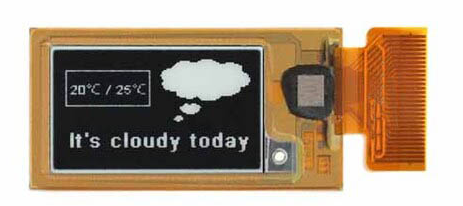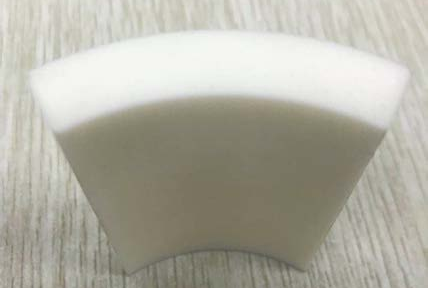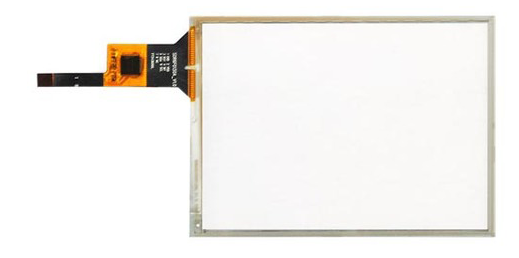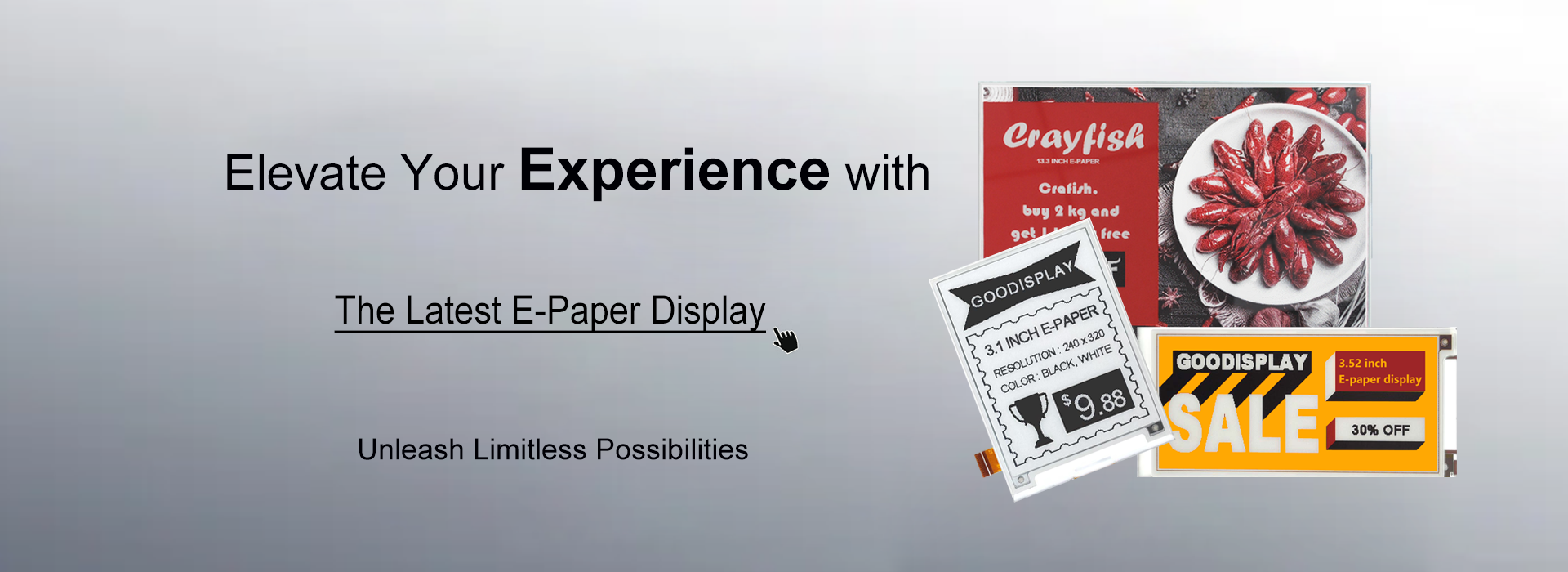ePaper Display Usage Guidelines
- Categories:Support
- Author:
- Origin:
- Time of issue:2020-05-18 15:49
- Views:
(Summary description)
ePaper Display Usage Guidelines
(Summary description)
- Categories:Support
- Author:
- Origin:
- Time of issue:2020-05-18 15:49
- Views:
Maximize the Performance of Your ePaper Display with These Usage Guidelines
To ensure optimal performance and longevity of your ePaper display product, please review and follow these guidelines for proper care and safe handling:
Contents

-
Always follow ESD-safe handling techniques. Be sure to ground the human body and electric appliances during work. Preferably, use a conductive mat on the table & wear cotton clothes or conduction processed fiber. Synthetic fiber is not recommended. To reduce the generation of static electricity, be sure the working environment air is not too dry. (50 ‐ 60% relative humidity recommended).
-
Inspect products before use to ensure it meets pre-specified quality standards. DO NOT remove our manufacturer's plastic liners If the product does not meet our quality standards or it's defective.
-
Wear gloves or finger cots to prevent electrical contacts or glass surface contamination.
-
Always follow proper soldering techniques and ventilation requirements.
-
Cosmetic defects are only warranted with original plastic liners, and with no customer assembled materials added to the product. Polarizers scratched due to mishandling are not considered cosmetic, this is considered customer-induced handling damage.
-
Always use devices within the rated voltage and current limitations. Powering beyond these specifications will result in irreparable damage.
Handling and Operation Precautions for ePaper Display
Assembly Guidelines for ePaper Displays
-
Maintain Temperature: Ensure assembly environment remains within 23±3℃.
-
Protective Film Removal: Prior to assembly, remove the protective film from ePaper display.
-
Handle with Care: ePaper display products are delicate; avoid applying excessive pressure during assembly.
-
Static Electricity Precautions: ePaper display ICs are sensitive to static electricity. Implement strict measures to prevent static discharge during assembly, operation, and storage. Keep ESD below ±200V.
-
Control Humidity: Maintain humidity levels within 55±10%RH.
Operation Conditions and Design Notices
-
Sunlight Exposure: Avoid exposing the ePaper display to direct sunlight as it can potentially damage the film.
-
Strict Compliance with Specifications: When designing the driving circuit, adhere strictly to the provided specifications. The use of components that do not meet these specifications may shorten the lifespan of the ePaper display.
-
Refresh Intervals:
- For monochrome ePaper displays, the refresh interval should be at least 180 seconds (except during partial refresh mode).
- For multi-color ePaper displays, perform a full refresh at least once every 24 hours.
-
Partial Refreshes: After every 5 partial refreshes, perform a full refresh on the ePaper display to prevent ghosting on the screen.
-
Deep Sleep Mode: After every refresh operation, ensure that the ePaper display is set into deep sleep mode to conserve power and prolong its lifespan.
-
FPC Bending Position: The bending position of the Flexible Printed Circuit (FPC) should be approximately 1mm from the glass substrate. Flexing other parts of the FPC is not permitted.
Operation Precautions for Flexible ePaper Display

-
Flexible ePaper display screens should not be repeatedly bent and folded.
-
The IC (integrated circuit) and its surrounding areas are not flexible, so they should not be bent.
-
When handling flexible display screens, use gentle methods like suction cups whenever possible.
-
Both the front and back of the e-paper display screen should be free from granular foreign objects.
-
Operating and storage temperatures should not exceed 70℃, as this could damage the display screen.
-
There are limitations on the bending angle of ePaper displays, with a curvature radius of approximately 5 cm for fan-shaped molds.

Designing the End-Customer Product
-
When available, use the Good Display provided 3D files for optimal design consideration.
-
The product design should allow slack for proper FPC (flex cable) insertion and routing. Designs that inherently involve tightly positioned flex cables should be avoided. This places too much tension on the cable/connector and may contribute to reliability issues.
-
Flex (FPC) cables require 1mm bend radius. Creased FPC's are indicative of customer abuse.
-
When handling displays, never apply pressure (or squeeze) the glass area.
-
When handling flex cables never allow for contamination of the “golden finger” area. High reliability assembly keeps fingers cleans and avoids hand-oil contamination.
-
Never perform hot-swaps (inserting/removing displays into powered ON devices) This may cause corruption or an EOS degradation event.
-
Never route the flex cables through housing openings that do not offer enough edge clearance. Rubbing (even through one-time drop events) may cause damage to the flex cable.
-
Never apply stiffening tapes (like non-conductive Kapton) to the flex cables. When stress is applied to the cable (for instance, during drop testing), the stress will likely be accommodated in the region where the tapes end. This undue stress often shows as flex cable tearing. Once torn, a flex cable is no longer able to conduct signals as intended and is defective. Torn flex cables are not covered by the warranty.
-
Always try to use MOLEX original connectors. These connectors are designed to accommodate finger width variations (as normally might be expected) and apply well-specified holding forces to the cable. They allow for the best electrical connections to be made and maintained.
-
When inserting FPC cables into the MOLEX connectors, train your assembly operators with the proper techniques.
-
Cables should enter connectors squarely WITHOUT flex cable buckling during the insertion. Buckling (a momentary light folding of the cable), should always be avoided.
-
Connectors should then be locked using the tabs on both sides of the connector.
-
Following insertion, an inspection is recommended that insertion instructions have been properly followed.
-
In the event of failure, consider removing the flex cable, re-inserting, and re-testing.
-
High reliability designs also include the application of kapton tape overlapping slightly the connector and the flex cable, aiding to prevent long term separation.
-
-
Never remove flex cables from connectors without first unlocking the holding tabs. Severe golden finger scratch marks are an indicator that cables were violently removed from locked connectors. Units with this type of damage are not covered by the warranty.
-
These products are constructed of glass. Always avoid undue stress that may be introduced. Product stress may be introduced when mounting the display within the product housings.
-
Uneven torques applied across the glass surface may result in glass breakage.
-
Both displays and touch panels utilize the ACF bonding techniques. This involves the usage of double-sided electrically conductive tapes bonding flex cables to glass structures. Once bonded, avoid pulling on the flex cables. General guidelines include limiting loads to less than 1 Kg. Long-term forces exceeding this may result in damaged bonds and electrical disconnects. Good Display cannot be held responsible for devices used beyond this pull force.

- Most capacitive touch panels are attach to the displays around the edge perimeters. Never attempt to separate these assemblies.
- The appearance of small air bubbles around the edges or corners of optically bonded panels indicates uneven forces being applied to the product. These forces are attempting to separate the panel from the display and result in bubble formations in the glass.
- Never apply chemicals to CTP surfaces. This will result in long term degradation of the panels. Cleaning should only be done with a dry lint-free cloth.
- Only use the stylus intended for the touch panel. Super-sharp stylus tips can damage the finish. Consider providing a proper stylus for end-user to avoid damage.
- Never apply more force to the touch panels than is normally expected. The application of excessive force for the purpose of recognition is indicative of a touch panel failure.
- When using fingers for actuation, ensure hands are clean of excessive oils or particles. Wet or dirty fingers may not be properly recognized by the touch panels. This is by design.
Storage Guidelines for ePaper Displays
-
Temperature and Humidity: Maintain a controlled environment with a temperature range of 23±3℃ and a humidity range of 55±10%RH for optimal storage conditions.
-
Orientation: Store the ePaper display with the front facing up and flat, displaying a white pattern. This orientation helps prevent inerasable ghosting from occurring.
-
Prompt Utilization: To ensure the quality of the ePaper display, it is recommended to use it as soon as possible after unpacking. This helps minimize the potential effects of prolonged storage.
Scan the QR code to read on your phone
logo
Contact
copyright
©2007-2025 DALIAN GOOD DISPLAY CO., LTD. All Rights Reserved. ICP08000578-1








